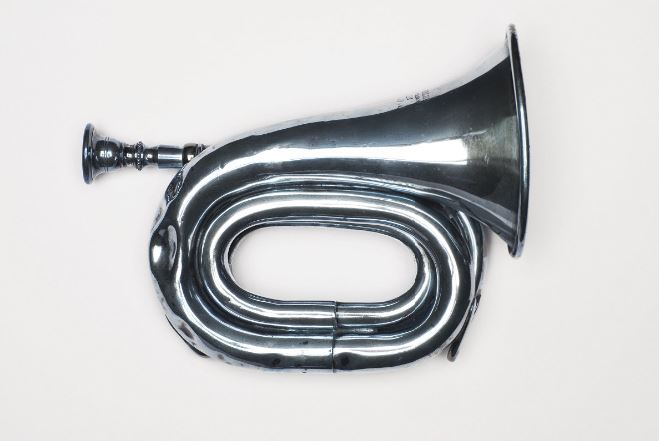
In the late-19th Century, bicycle clubs became a popular pastime throughout Britain and North America. The clubs were social organisations often organised around neighbourhoods, professions, gender and social classes. As these groups of cyclists competed for space on the road, they needed a way to signal to traffic, passers-by and each other. The bicycle bugle, a small, compact instrument, was the perfect solution.
It was the practice in most early bicycling clubs to have a club bugler give directions to members when out on a ride. These directions could signal that the group was mounting, speeding up, slowing down, dismounting, or even lifting their hats as they passed. Bicycling clubs were popular up until the start of the First World War. After the war alternative forms of entertainment made the bicycling club, and its associated bugle, mostly a thing of the past.
The bicycle bugle on display at St Cecilia's Hall (MIMEd 903) was made by J. Higham in Manchester around 1900. The instrument has four turns in its tubing (making it a 'buglet') and its bell is oval rather than round in shape.
Special thanks to our curatorial volunteer, Chris Kelnar, for his research on this instrument.

